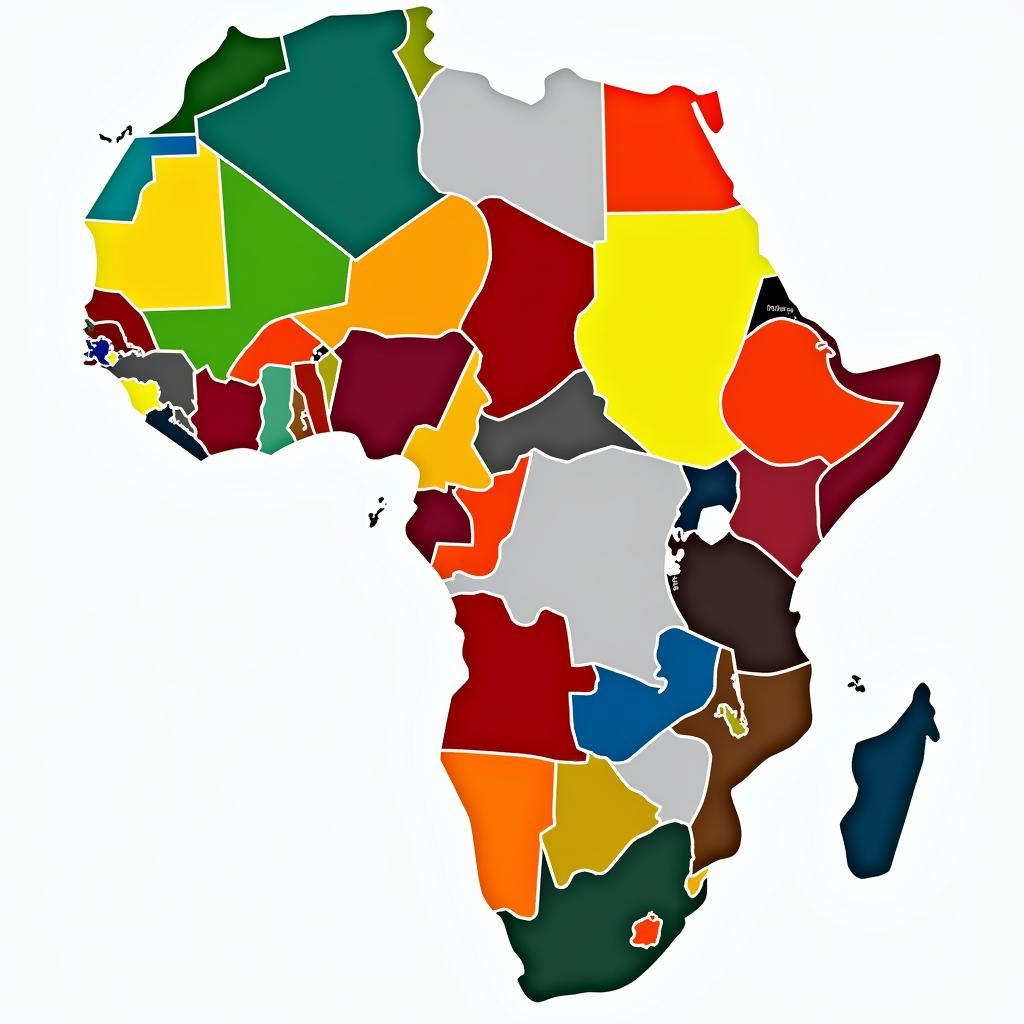African Bush Elephant Habitat: A Deep Dive into their Home
The African bush elephant, the largest land mammal on Earth, roams vast landscapes across sub-Saharan Africa. Their “African Bush Elephant Habitat” is a complex and diverse ecosystem that plays a crucial role in the survival of this iconic species.
What Defines an African Bush Elephant Habitat?
African bush elephants are highly adaptable and can thrive in a variety of habitats. However, certain features are essential for their survival, including:
- Water: Elephants need to drink vast amounts of water daily, so proximity to reliable water sources like rivers, lakes, and waterholes is crucial.
- Food: These herbivores consume enormous quantities of vegetation, including grasses, leaves, fruits, and bark. A diverse range of plant species is essential to support their dietary needs.
- Space: Elephants are highly mobile and require extensive home ranges to find sufficient food and water, particularly during dry seasons.
- Shelter: While elephants don’t build permanent shelters, they seek shade from the scorching African sun under trees and large rocks.
The Diversity of African Bush Elephant Habitats
From the vast savannas of the Serengeti to the dense forests of Central Africa, African bush elephants inhabit a surprising array of ecosystems:
- Savannas: Perhaps the most iconic image of an elephant habitat, savannas offer a mosaic of grasslands and scattered trees, providing a rich mix of food and cover.
- Woodlands: These areas, with more trees and denser vegetation, offer elephants shade and browsing opportunities.
- Forests: While less common, some elephant populations, like those in the Congo Basin, are adapted to living in dense forests.
- Deserts: Even arid regions like Namibia’s Kunene region support elephant populations, although their densities are much lower and their movements dictated by the availability of water.
Threats to African Bush Elephant Habitats
Sadly, the vast landscapes that elephants need are shrinking and fragmenting due to human activities:
- Habitat Loss and Fragmentation: Land conversion for agriculture, human settlements, and infrastructure development are encroaching on elephant habitats, leading to reduced space, food, and water.
- Human-Wildlife Conflict: As human populations grow and expand, competition for resources like land and water intensifies, resulting in conflicts between people and elephants.
- Climate Change: Changing rainfall patterns and increased droughts are altering vegetation patterns and water availability, further stressing elephant populations.
Conservation Efforts: Protecting the African Bush Elephant’s Home
Protecting and connecting these fragmented habitats is critical for the long-term survival of African bush elephants:
- Protected Areas: National parks and reserves play a vital role in safeguarding elephant populations and their habitats.
- Community-Based Conservation: Engaging local communities in conservation efforts, such as through tourism initiatives, helps create a sense of ownership and ensure the long-term sustainability of conservation efforts.
- Wildlife Corridors: Connecting fragmented habitats through corridors allows elephants to move between areas, access resources, and maintain genetic diversity.
Where can I see African bush elephants in their natural habitat?
Several countries in Africa offer incredible opportunities to see African bush elephants in the wild. Here are a few examples:
- Tanzania: Home to the Serengeti National Park, known for its vast elephant herds and the annual migration.
- Botswana: Chobe National Park and the Okavango Delta offer excellent elephant viewing in diverse habitats.
- South Africa: Kruger National Park is one of the largest and best-managed parks in Africa, with a thriving elephant population.
- Kenya: Amboseli National Park offers breathtaking views of elephants against the backdrop of Mount Kilimanjaro.
The Future of the African Bush Elephant Habitat
The future of the African bush elephant and its habitat depends on our collective efforts to address the threats they face. By supporting conservation initiatives, promoting responsible tourism, and raising awareness about the importance of elephant conservation, we can ensure that these magnificent creatures continue to roam Africa’s wild landscapes for generations to come.
FAQs about African Bush Elephant Habitat
1. What is the average size of an African bush elephant’s home range?
The size of an African bush elephant’s home range can vary significantly depending on factors like food availability and population density. However, they can range from a few hundred to several thousand square kilometers.
2. How do elephants contribute to the health of their habitat?
Elephants are considered “ecosystem engineers” as their movements and feeding habits create clearings in vegetation, open up waterholes, and disperse seeds, promoting biodiversity and creating habitats for other species.
3. What are some ways to help protect African bush elephant habitats?
You can support elephant conservation by:
- Supporting organizations working on elephant conservation.
- Choosing responsible tourism operators that prioritize wildlife conservation.
- Raising awareness about the importance of elephant conservation.
- Advocating for policies that protect elephant habitats.
For any support or questions, please contact us at Phone: +255768904061, Email: kaka.mag@gmail.com, or visit us at Mbarali DC Mawindi, Kangaga, Tanzania. We have a dedicated customer support team available 24/7.
